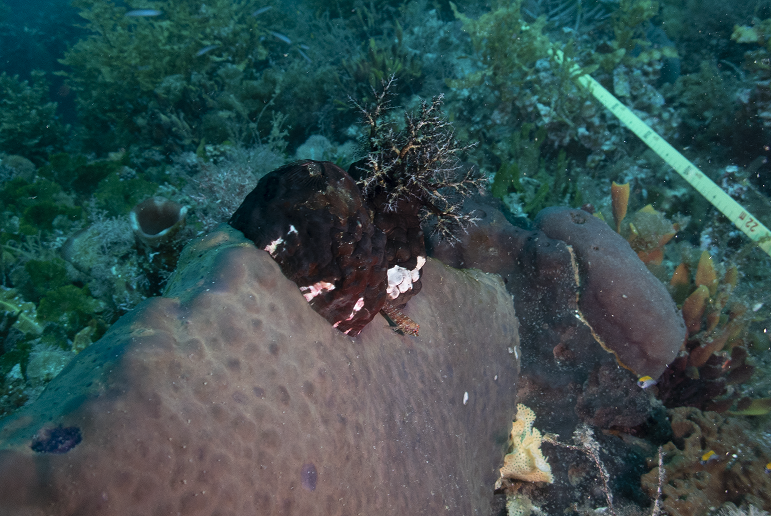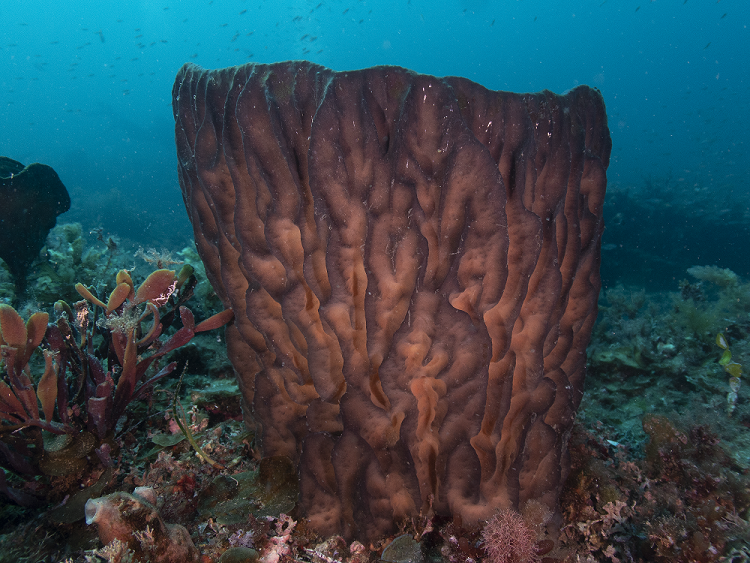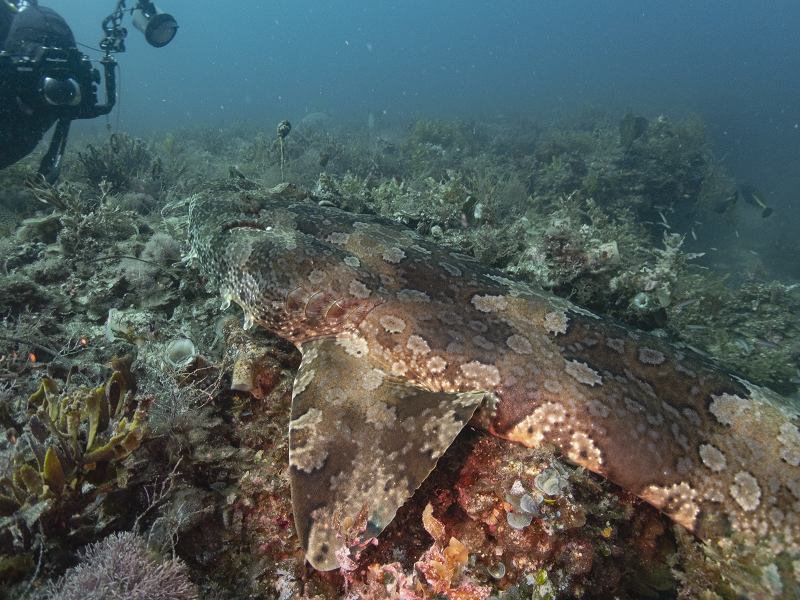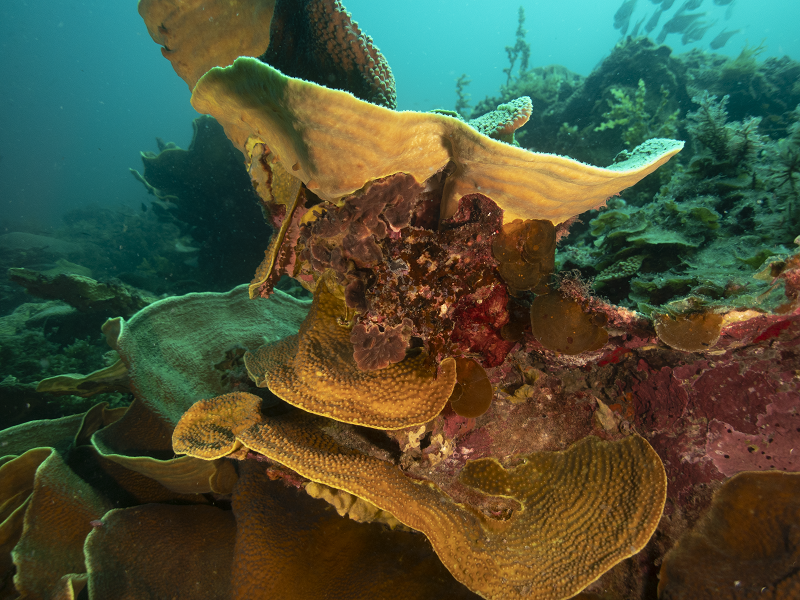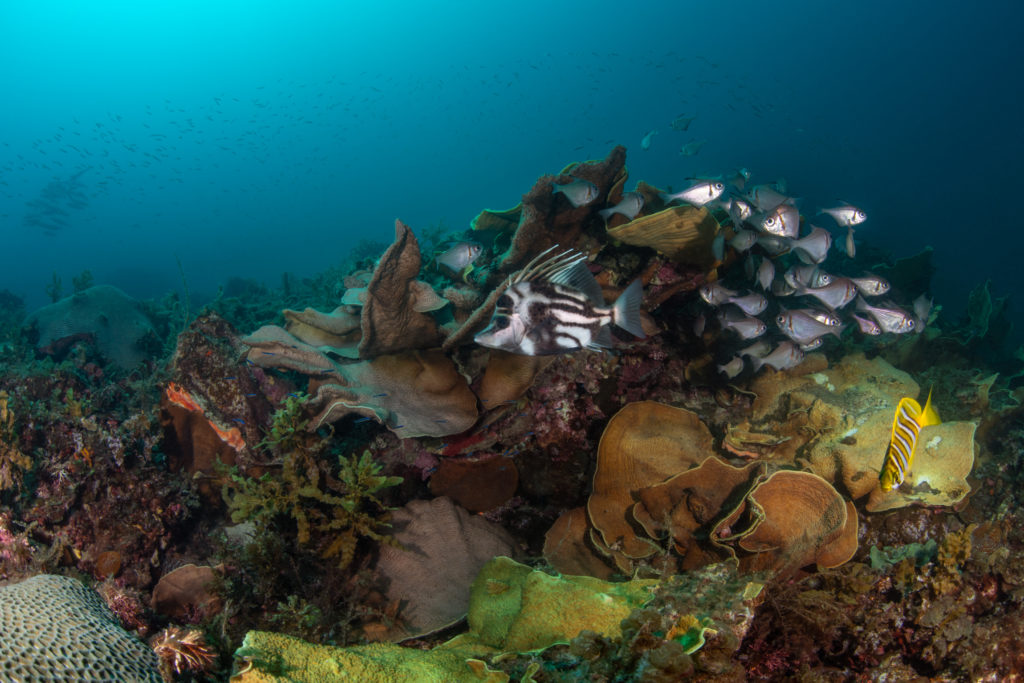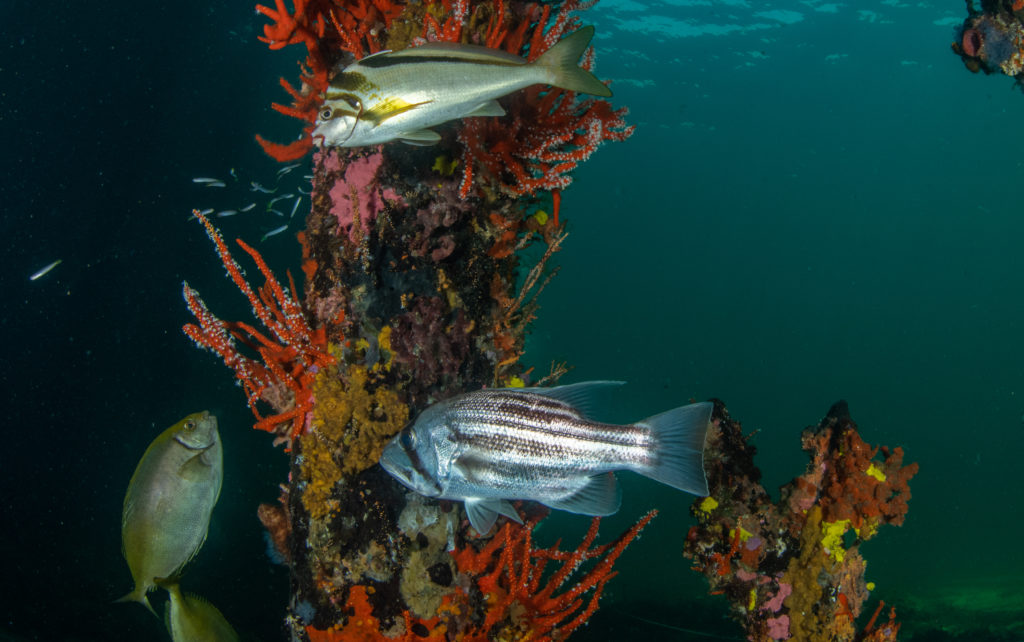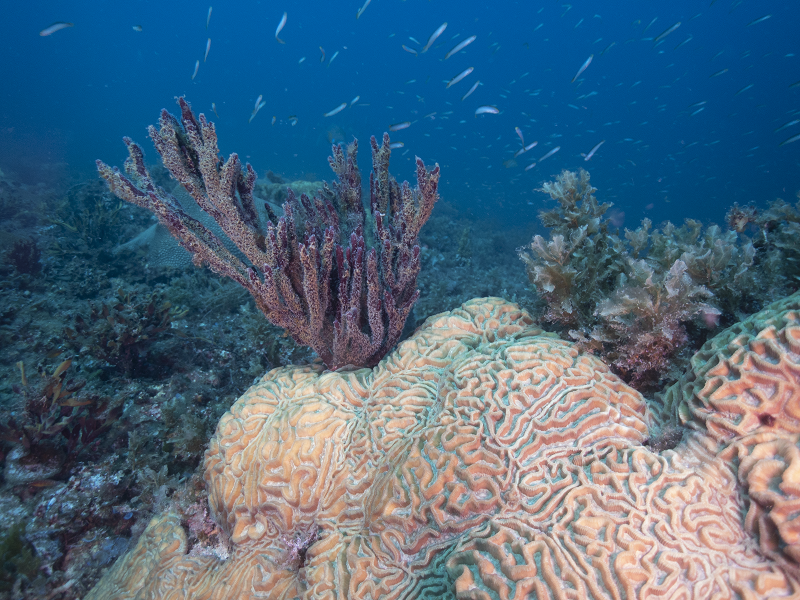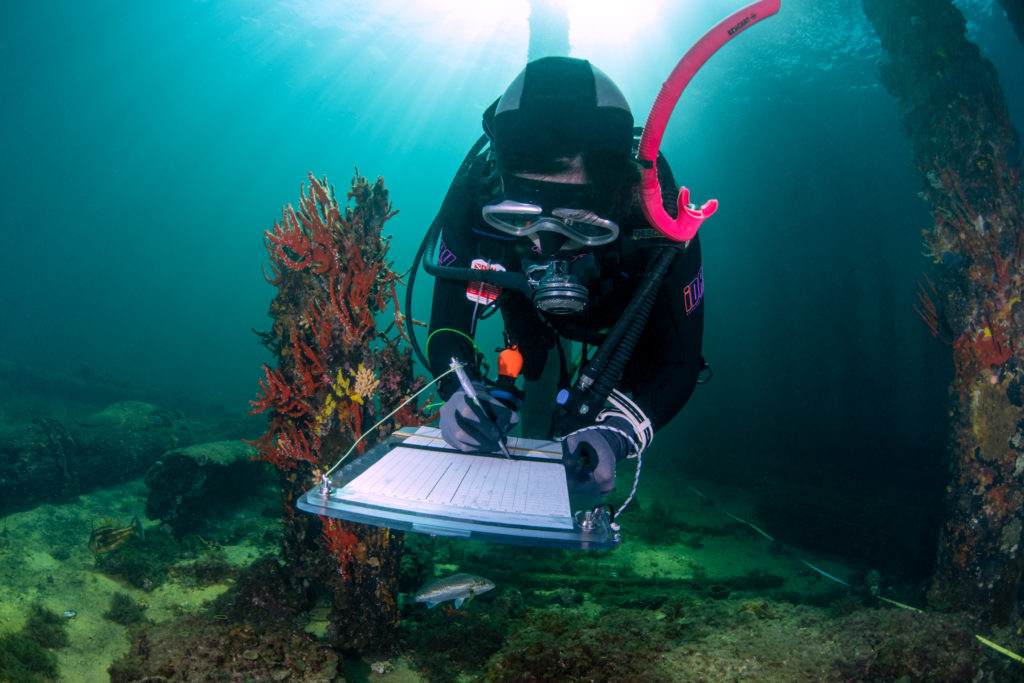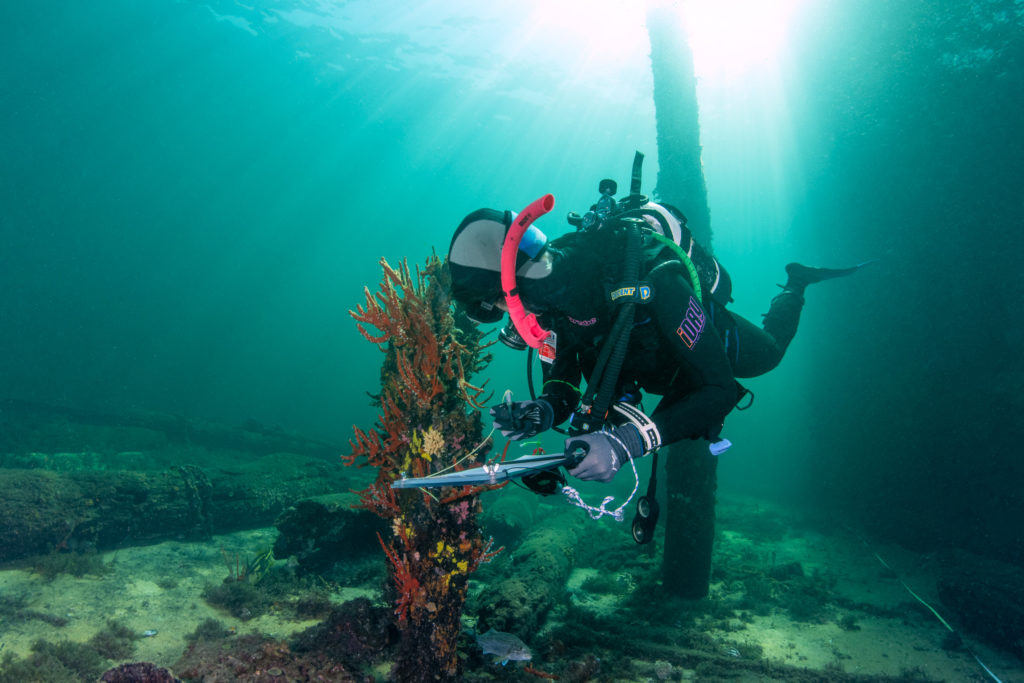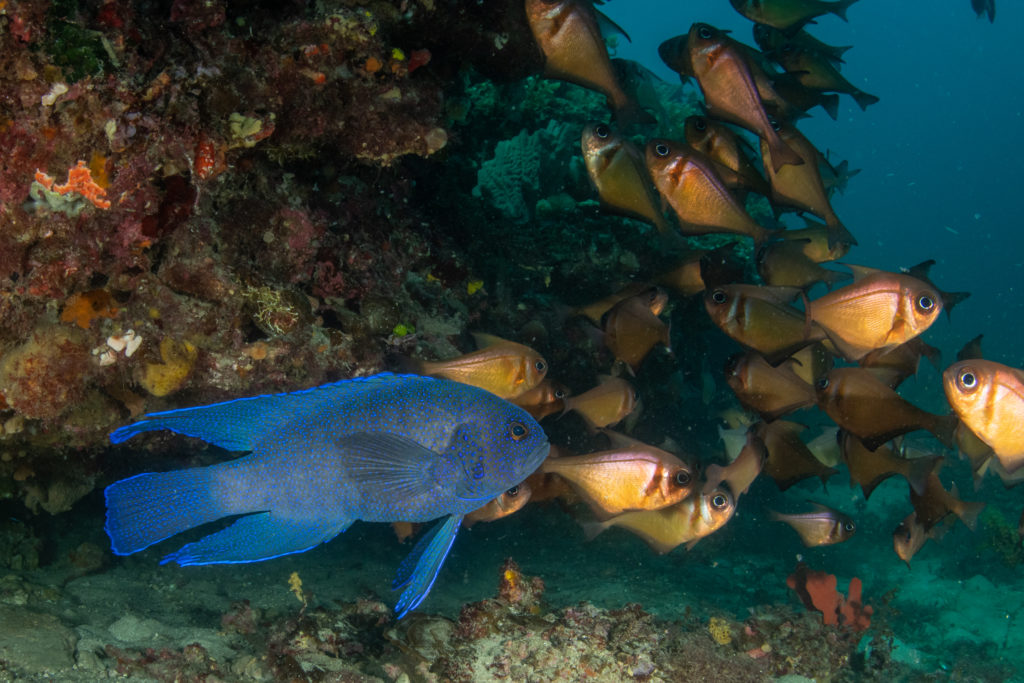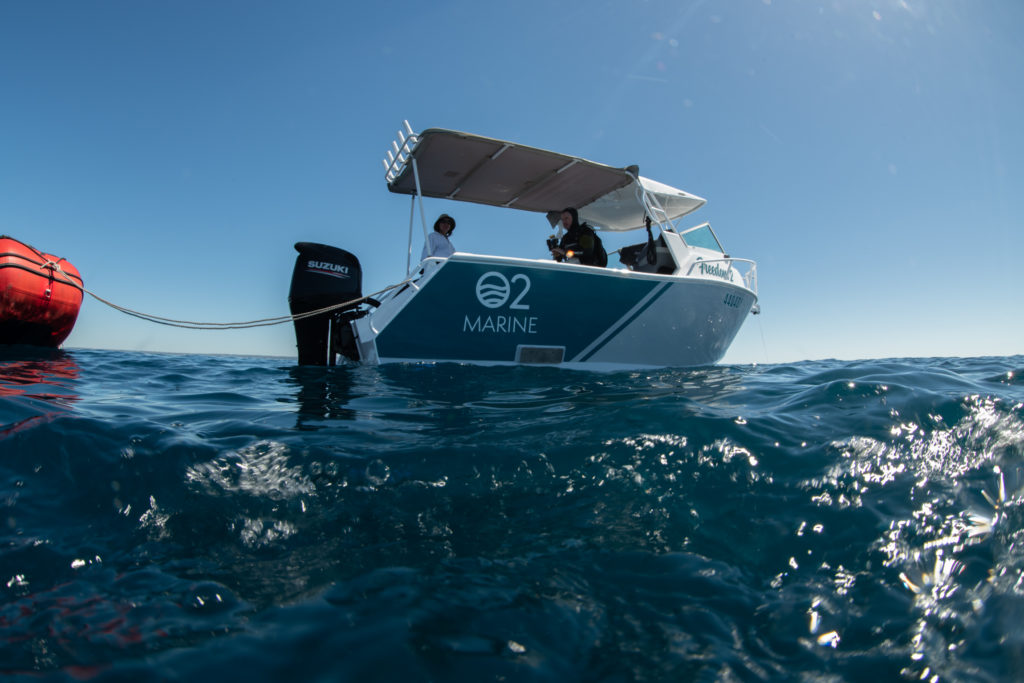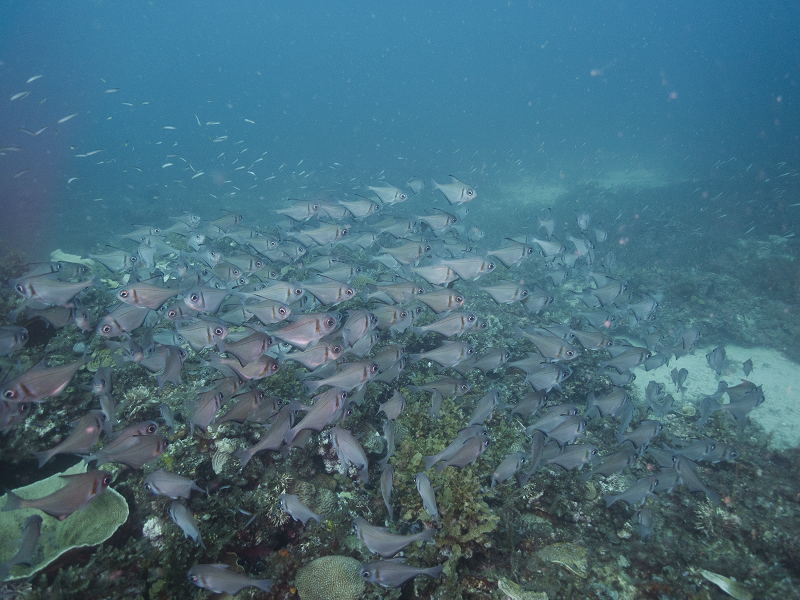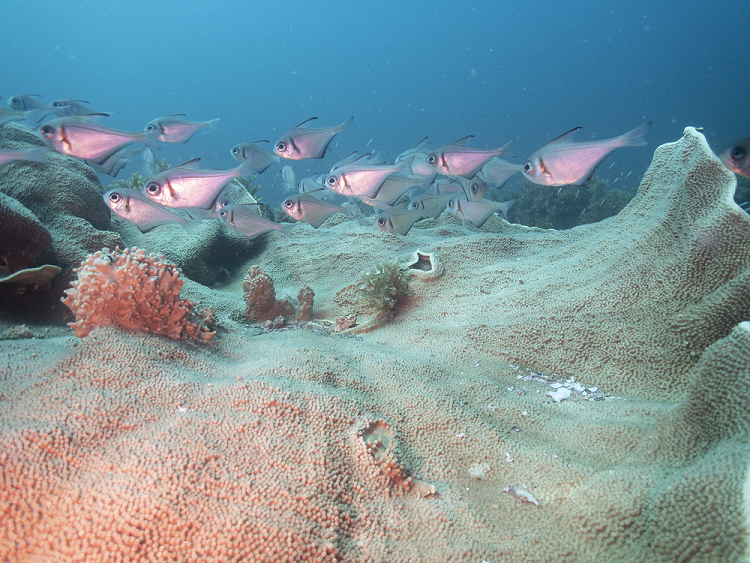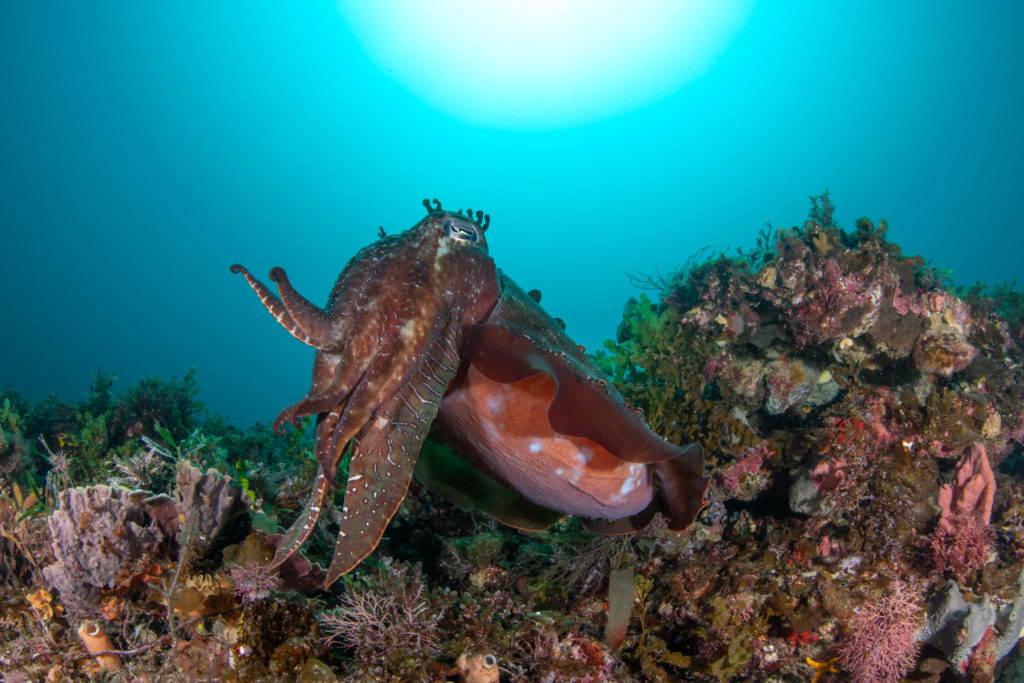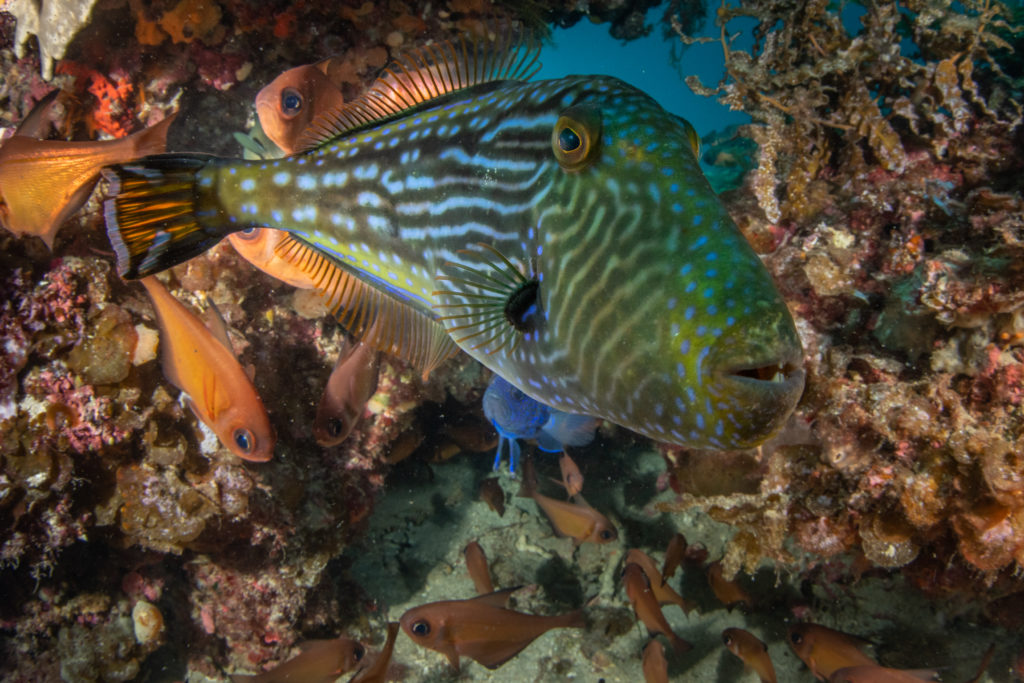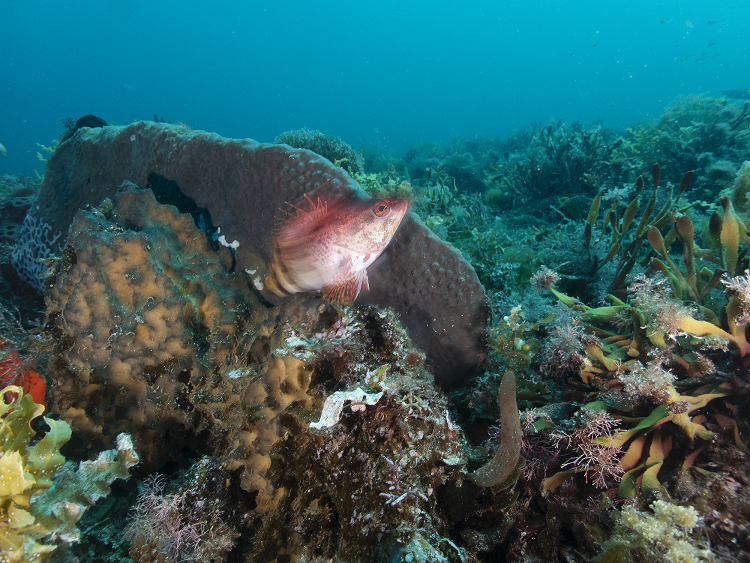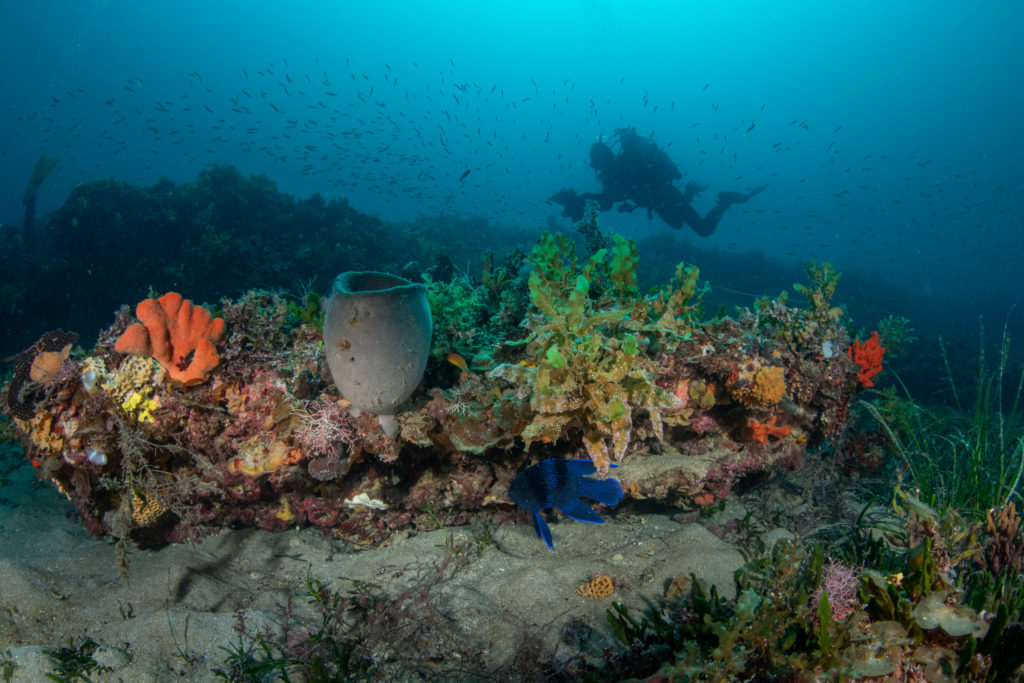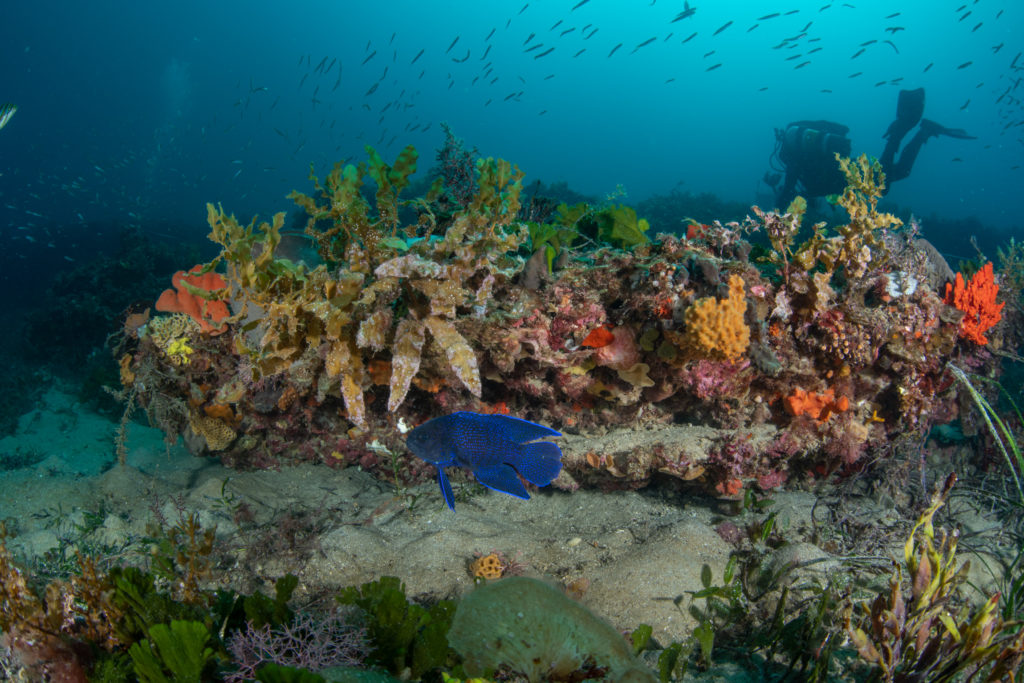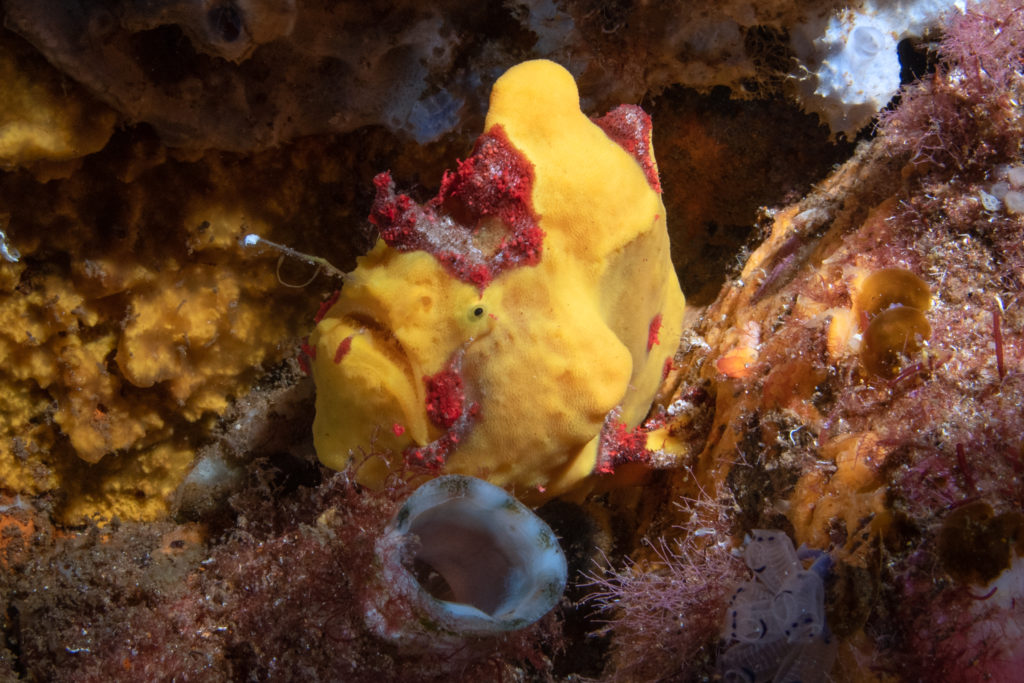The fourth expedition to the Geographe Marine Park, offshore from Dunsborough and Busselton, was the first RLS trip in Western Australia cancelled in 2020 as the first impacts of the COVID-19 pandemic became apparent. As an important commitment and part of the ‘Lap of Aus 2020’, it was one of the first priorities inked for 2021.
Blessed with fine weather once again, seas varied from flat to almost flat for the duration. Divers travelled together on two boats, rotating buddy pairs through six sites over three days. Then, with job done, the seaward end of the Busselton Jetty was also surveyed. The full dive crew was Michael Brooker, Anna Cresswell, Paul Day, Wendy Hutchison, Sophie Powell, Kevin Smith and Rick Stuart-Smith. Chris Cunnold served as unofficial logistics officer, going with the flow, as the expedition descended on his and Wendy’s back yard, shed, dining room, kitchen, front yard etc.
We visited four established sites; Coral Gardens, Devils Lair, Hippo Creek and Squiggly Reef, and added two new ones, Kraken and Luau. Continuing the trend of creative and appropriate names, Luau reflects an abundance of Hulafish and their potential fate from both cruising and resident predators. Kraken was inspired by the presence of cuttlefish that lurk along the undercut reef and prompted by the label of a bottle on the supper table.
The sites extend east to west across the bay roughly in a line parallel to the coast in 16-19m. The main feature of each site is a linear reef, sometimes straight, sometimes more ‘squiggly’. These reefs are characterised by fractured edges, vertical walls, small caves and undercuts and isolated bommies. The flat terrain above is populated by low but diverse algae dotted with stony corals and sponges. Seagrass beds extend into the distance below. In some places, algae gives way to gardens of coral.

Of the 67 fish species recorded at the six sites within the Geographe Marine Park, the most frequently occurring were those generally present in schools close to shelter and in caves and crevices. Hulafish accounted for 84% of the total number of fish recorded with Yellowhead Hulafish (Trachinops noarlungae) recorded on all 26 of the 50m x 5m transect blocks surveyed. At 76,300 individuals and 81% of the total count, their number was more than 10 times that of any other fish species. Bullseyes made up another 12.5% with Rough Bullseye (Pempheris klunzingeri) found on 24 blocks at just under 8% of all fish counted.
Apart from these schools, three wrasse species were particularly common. Blackspotted Wrasse (Austrolabrus maculatus) made up 30% of the other species found and were present on all 26 blocks, followed by Western King Wrasse (Coris auricularis) at 15% on 26 blocks, and Redband Wrasse (Pseudolabrus biserialis) at 10% on 25 blocks.
Cruising schools of Silver Trevally (Pseudocaranx georgianus) and Samson Fish (Seriola hippos) were often met on descent but had moved on by the time transect tapes were out.
Roughly one third of the 67 species were recorded on ten or more of the 26 blocks surveyed, another third recorded on three to nine blocks and the remaining third on only one or two blocks. A further eleven species were recorded only at the Busselton Jetty.
Among the 20 species of cryptic fish recorded on 50 x 1m transects and after the ubiquitous Bullseyes, Blackthroat Threefin (Helcogramma decurrens) was the most common with 173 scored on 15 blocks. Twospot Goby (Eviota bimaculata), Black-banded Seaperch (Hypoplectrodes nigroruber), Western Blue Devil (Paraplesiops sinclairi), Southern Blue Devil (Paraplesiops meleagris) and Western Red Scorpionfish (Scorpaena sumptuosa) were recorded in low numbers at an average of around five per transect combined.
We recorded the first ever Dwarf Red Scorpionfish (Scorpaena versipora) for RLS records, supported with the all-important pic.
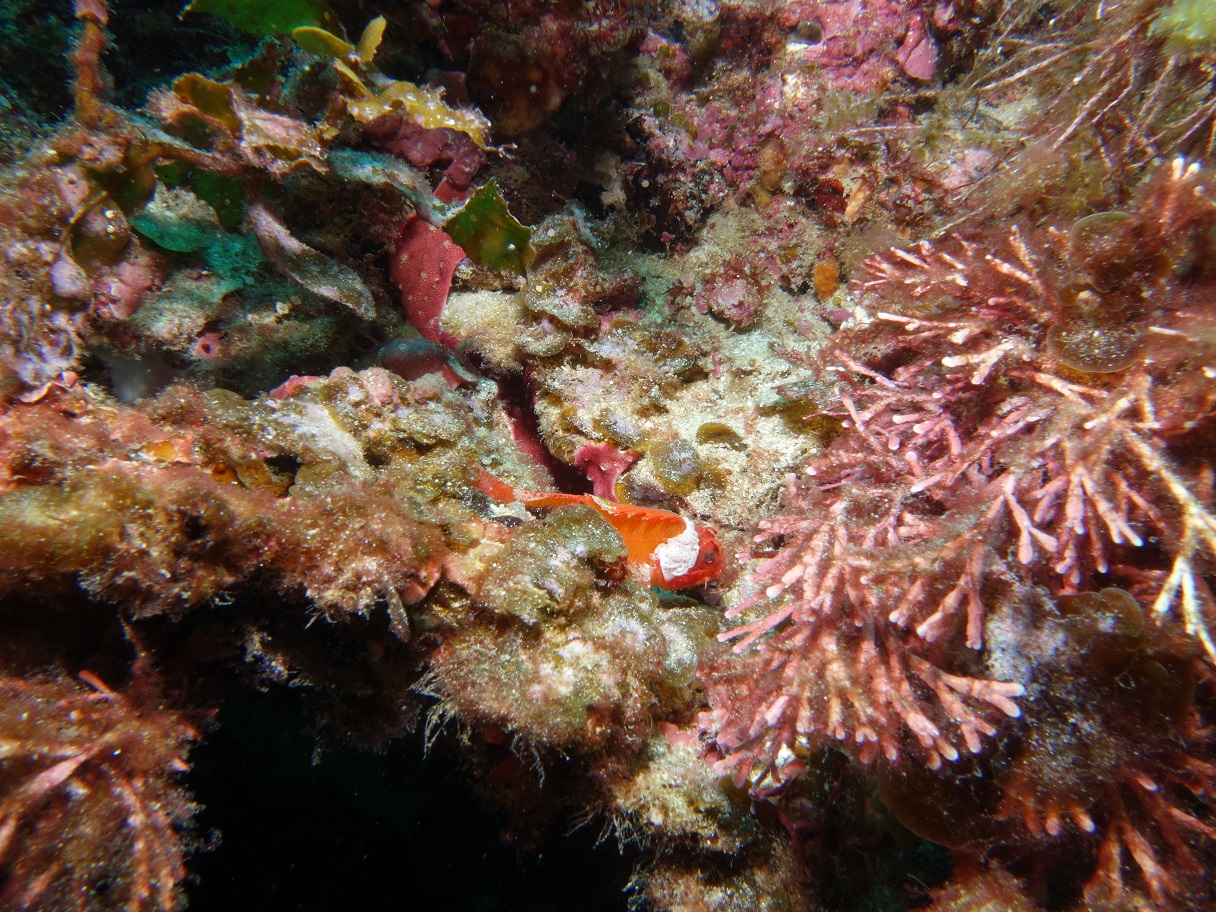
The invertebrate count was 33 species. Seastars; Pentagonaster dubeni, Nectria macrobrachia, Echinaster varicolor, Plectaster decanus, Fromia polypora were recorded on at least half of the blocks but averaged only one or two per block in total. Nudibranchs were present in small numbers with Phyllidiella pustulosa and Chromodoris westraliensis recorded 5 times each while the urchin count was exceedingly low with only three counted altogether.
As an additional challenge, divers were charged with the task of returning with images of a small collection of fish with very few current RLS records. By the end of the trip we had found 18 Western Blue Devil (Paraplesiops sinclairi) but only four Spotty Seaperch (Hypoplectrodes wilsonii) and a solitary Yellowspotted Boarfish (Paristiopterus gallipavo).
Many thanks to Chris Cunnold and Wendy Hutchison for the hospitality on their beautiful and dive friendly property and Chris’ advice and assistance throughout.
Thanks to Rick for flying in from Tasmania. The ever-positive approach and ongoing encouragement and guidance in all things RLS inspires our continued commitment.
Well done to the dive crew for the hard work and enthusiasm, maintaining 100% dedication over three days on the water sandwiched between work, tidying up theses and other commitments. OK, so the sea was flat, the water still, pizza and burgers tasty and close by, ice creams icy and creamy, accommodation luxurious by field trip standards -and it was fun the whole time.
Special thanks and congratulations to Paul Day on the success of the mission. Everything ran on time and to plan. All sites were visited. Data was collected, entered and submitted within 24 hours of completion and well before the last dive boot dried. Keep your notes, Paul, it was great.
